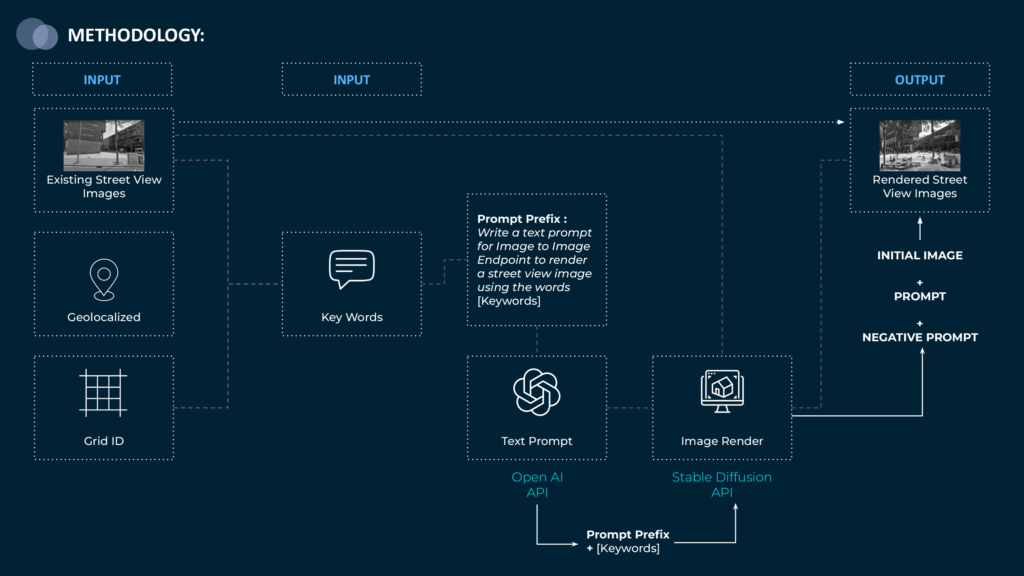Alejandro Aravena, renowned for his role in facilitating the recovery of a city struck by an earthquake and a tsunami, asserts that Participatory design transcends mere inclusivity and offers enhanced efficiency.
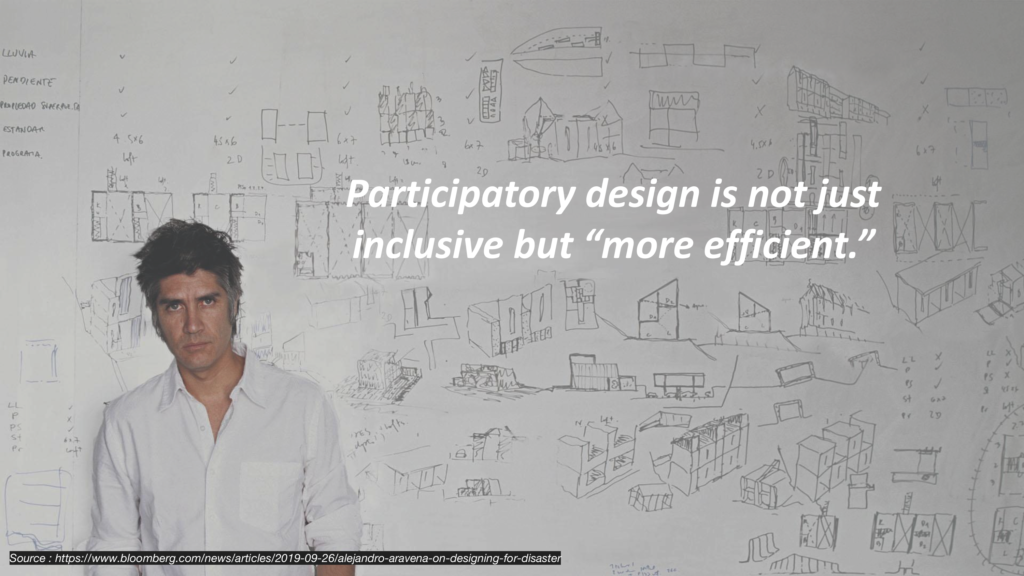
Conventional methods may not yield the desired effectiveness, necessitating a reevaluation of the tools employed for participation.
Barcelona, for instance, has already experimented with a digital solution called Decidim. However, the participation rate on Decidim stands at a mere 2.5% of the city’s population. This raises the question: Why are people seemingly disinterested in engaging with such platforms?

Public participation in urban design within cities is currently falling short of desired levels. The process of involving the public encounters numerous challenges that impede its effectiveness and overall impact, particularly when it comes to achieving effective engagement.
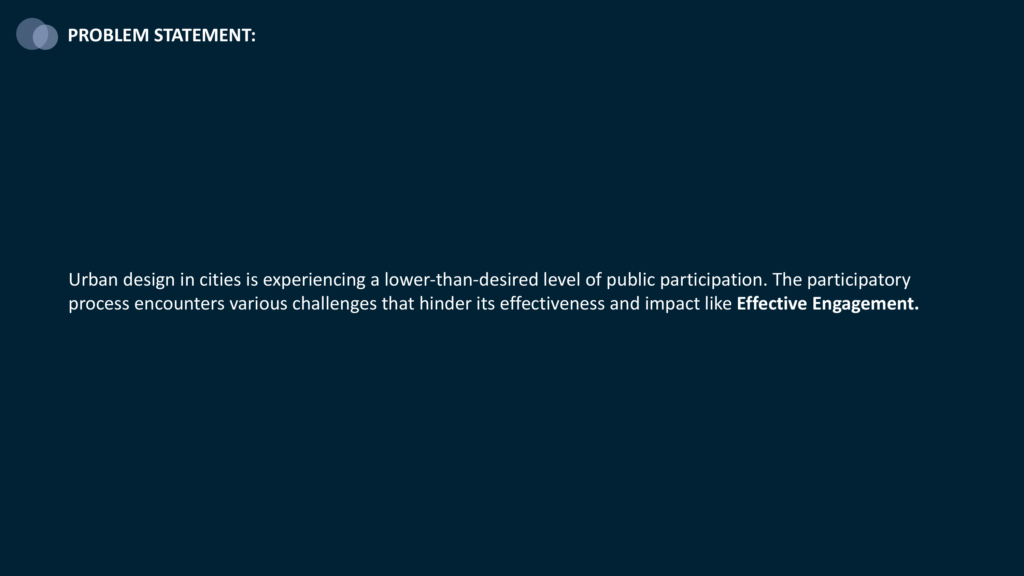
Let us delve into the issues associated with current participation processes. One prominent concern voiced by the residents of Barcelona is the tediousness of filling out extensive surveys, which often feel like isolated, one-time tasks devoid of any feedback loop. Additionally, the utilization of these processes predominantly for large, protracted projects poses a challenge. As a result, individuals find it unrewarding since they do not witness tangible outcomes. People desire the opportunity to contribute their own ideas and visions for their communities and witness the realization of at least some of those ideas.

This project aims to enhance and streamline public participation by harnessing the potential of gamification processes. By incorporating elements of urban vibrancy, it seeks to facilitate and enhance public interest, making the participatory experience more engaging and efficient.
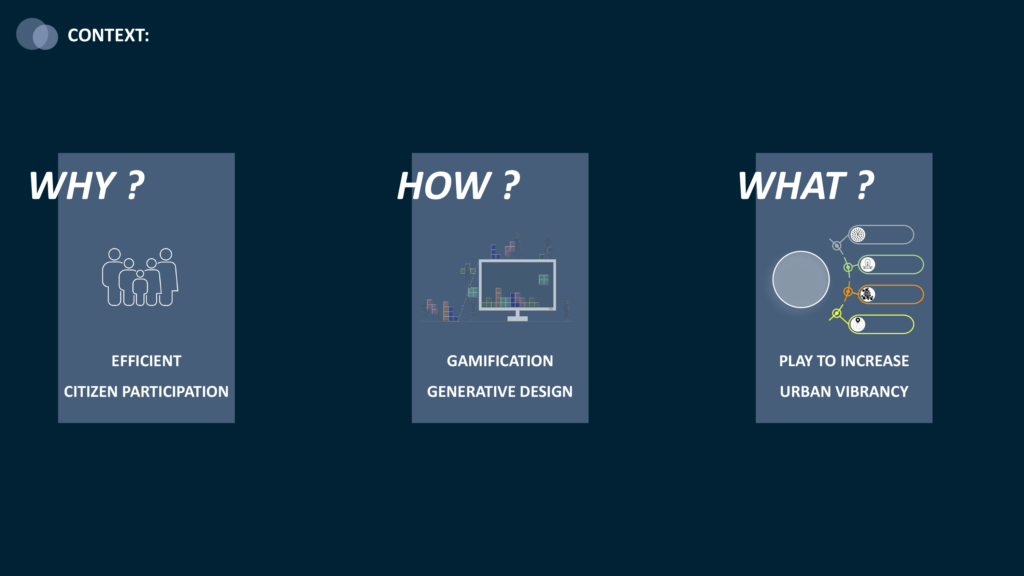

In our analysis of the city of Barcelona, we employ a grid-based approach to examine and comprehend the different categories of urban vibrancy using diverse datasets. By clustering these categories citywide, we identify an area of particular interest. We then utilize the grid IDs associated with this area to identify the specific factors of vibrancy that may be lacking, ultimately arriving at a selection of design keywords.
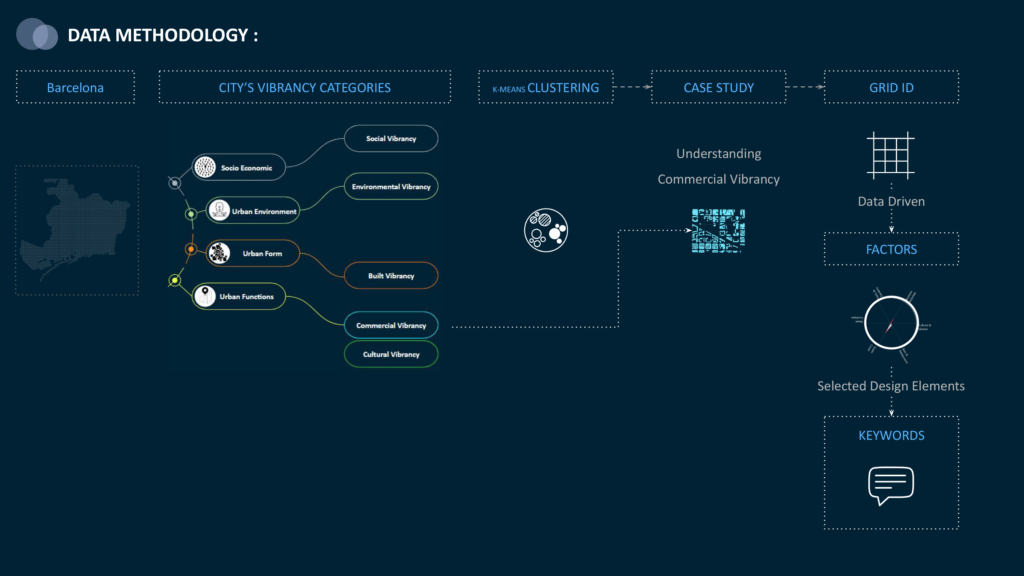
Through our analysis, we identified seven distinct clusters derived from the data. We closely examined the values of each cluster to gain deeper insights into their characteristics. One cluster stood out as a particularly interesting case study: Cluster 2, characterized by low levels of commercial vibrancy. This selection was made intuitively to allow for a comprehensive exploration of the dynamics within this specific cluster. By focusing our attention on this cluster, we aimed to uncover valuable insights and potential opportunities for enhancing commercial vibrancy within the identified area.
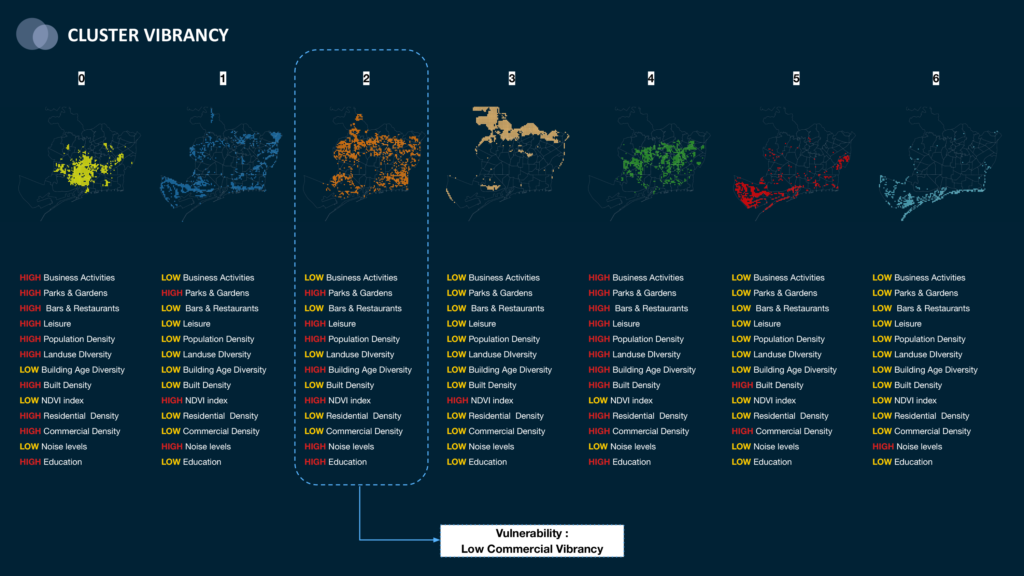
In order to evaluate the commercial vibrancy within each grid, an analysis of factors such as bars, restaurants, and business activities was conducted.
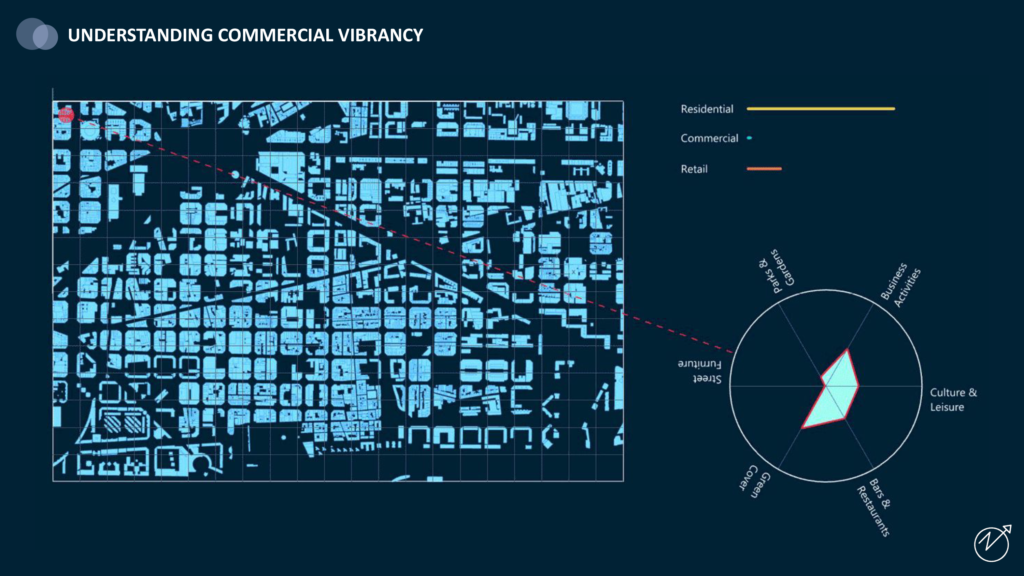
For each of these factors, specific keywords were established as design elements to address the identified gaps and enhance the missing factors.
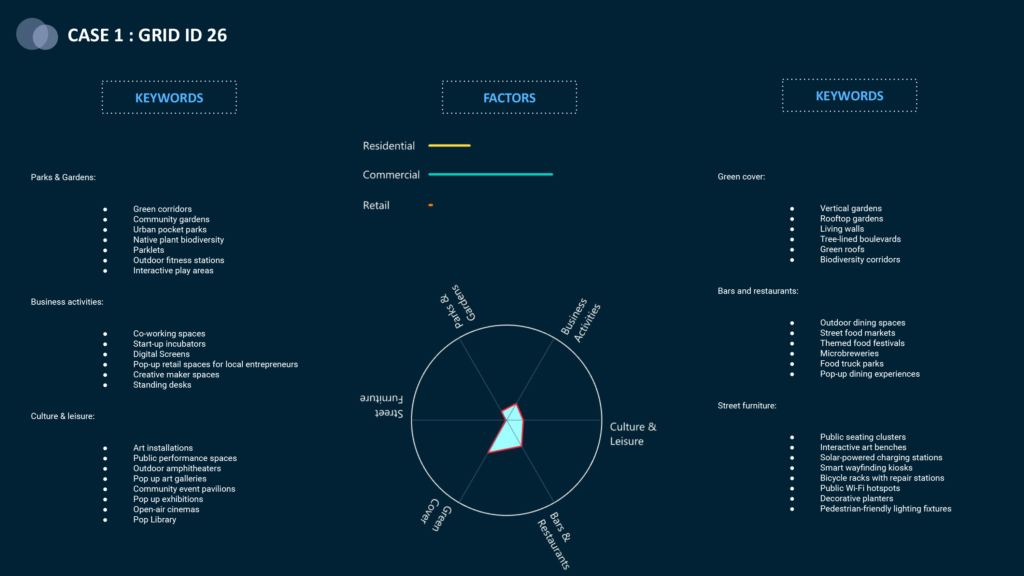
To proceed, we utilize the existing street view images as inputs, along with the corresponding grid IDs that provide us with the keywords. Using an OpenAI API key, we generate a text prompt based on these keywords. This generated prompt is then incorporated into a stable diffusion process, alongside the initial image and a negative prompt. The result of this process is a final output—an enhanced street view image that includes the elements selected based on the keywords.
